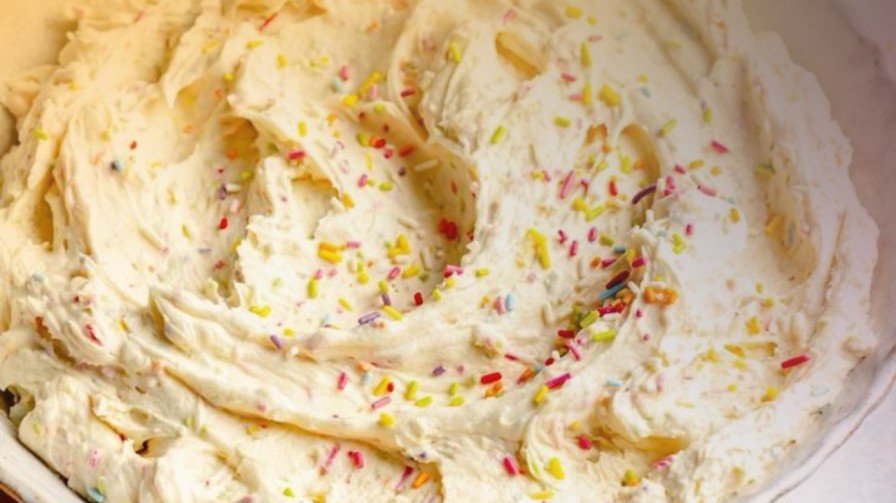Hey fellow bakers! “How to Make Vanilla Frosting” This stuff is my secret weapon—it’s the magic behind my painted rose cake, strawberry rose cake, and shag cake. One buttercream, endless possibilities! Start by creaming 226g of room temp butter until it’s soft to the touch.
Use that trusty paddle attachment and avoid the whisk—it’s all about that creamy texture. Sugar time! Sift in one pound for that perfect sweetness. Quality vanilla is key, so go for the good stuff—I’m talking Nielsen Massey or Roselle. Mix, add a splash of cream, mix some more.
Vanilla frosting perfection achieved! Now, grab your piping bag and let the decorating begin. Swipe left for the cupcake recipe that pairs perfectly with this heavenly creation.
How to Make Vanilla Frosting
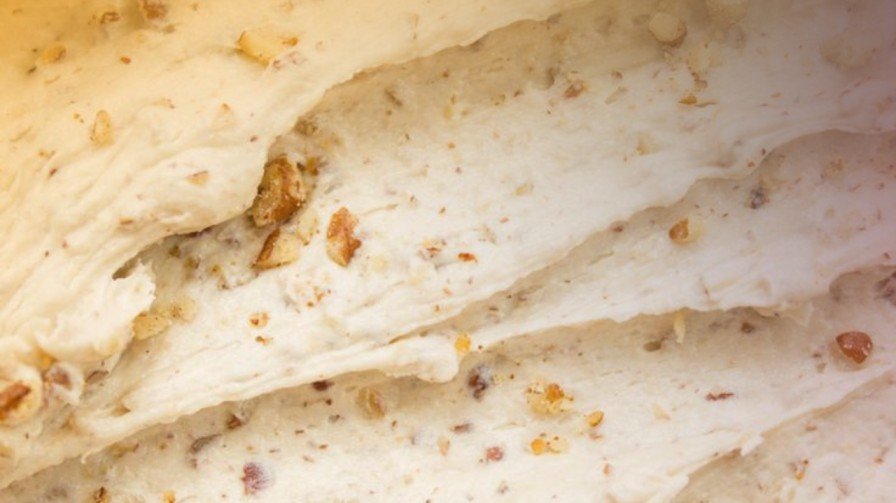
Ingredients:
- Unsalted, room temperature butter (1 cup or 226 grams)
- Sugar (1 pound)
- Vanilla extract (1 tablespoon)
- Heavy cream (for consistency)
- Salt (to taste)
Preparation:
Buttercream Bliss:
Make sure your butter is room temperature first. Cream it in a stand mixer with a paddle attachment. Avoid using a whisk, as it can add excess air, resulting in frothy and less manageable buttercream.
| Sugar Symphony | Mixing Magic |
| Weigh out one pound of sugar using a scale. | Introduce the sifted sugar gradually to the room temperature butter. |
| Sift the sugar to remove any lumps, ensuring a smooth and lump-free buttercream. | Opt for a low-speed mix initially to seamlessly incorporate ingredients. |
| Customize the sugar quantity based on taste preferences. | Elevate the flavor with a tablespoon of vanilla extract. |
| More sugar yields a stiffer buttercream. | Rescue a crumbly texture by adding a hint of liquid, like heavy cream, for smoothness. |
Vanilla Vibes:
Choose a high-quality vanilla for the best results. Brands like Nielsen Massey or Roselle are excellent choices. Consider using vanilla bean paste for a visually appealing result with visible vanilla flecks.
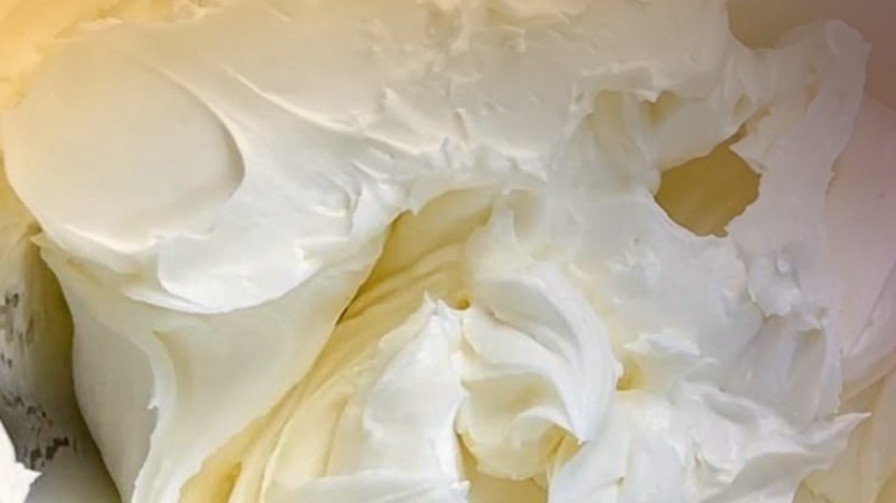
Creamy Consistency:
Continue mixing, adding the remaining sugar gradually. One tablespoon at a time, add heavy cream to adjust the consistency. Aim for an easily workable texture that is creamy and smooth.
Perfectly Pale:
Whip the buttercream until it reaches a light, pale color. For the whitest buttercream, choose a lighter-colored butter. If color is crucial, opt for a cheaper butter with less yellow tint.
Taste Test and Adjust:
Do a taste test of your buttercream? Dribble in some salt to make it sugary. You may also rearrange everything based on your interests or tastes.
Decorating Delight:
Transfer your heavenly buttercream into a piping bag fitted with your preferred tip. Decorate cupcakes or cakes with delightful swirls and turns.
Troubleshooting Tip:
If your piped buttercream does not look as expected, put it back into the bowl, mix it again at slow speed and add little cream that will make it shiny and smooth.
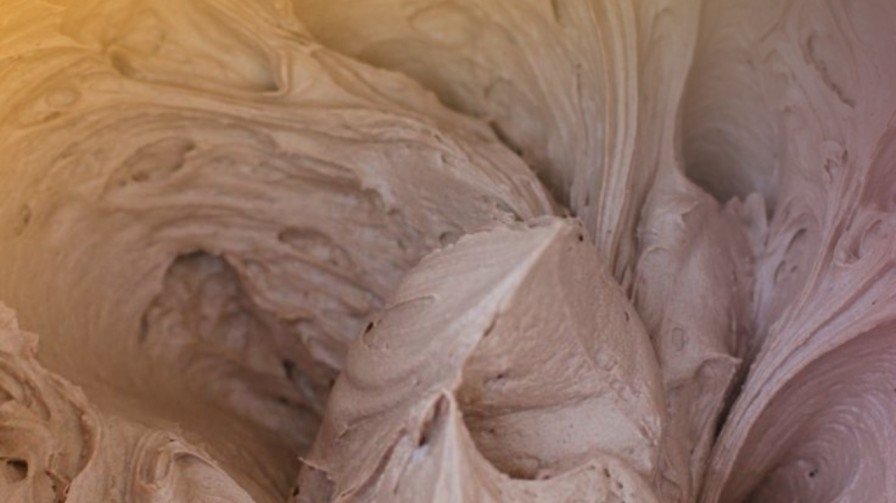
Conclusion:
In the world of buttercream, we explored alternatives like Italian and Swiss meringue for those seeking structural integrity and less sweetness. The tricks of the trade, such as adjusting the consistency for a glossy finish, were unveiled to elevate the aesthetic appeal of your buttercream creations.
Beyond the piping bag and decorating tips, we delved into questions about frosting versus buttercream, the pros and cons of buttercream, and the three main types to broaden our understanding. Beginners were encouraged to start their buttercream journey with the forgiving nature of American buttercream.
So, whether you’re a seasoned baker or just starting, may this guide be a sweet companion in your kitchen adventures. As your cupcakes don their swirls of perfection, remember that the art of buttercream extends beyond taste—it’s a symphony of flavors and aesthetics, bringing joy to every bite.
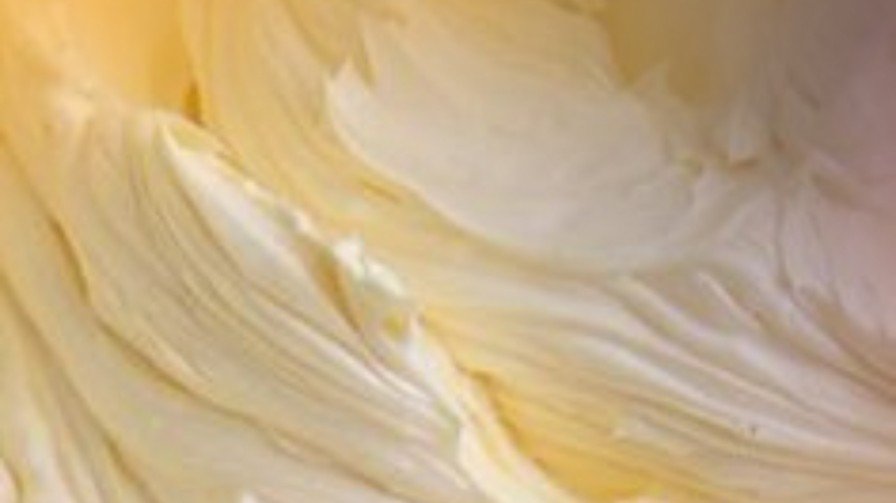
Pros and Cons of Crafting Classic Vanilla Buttercream Frosting:
Pros:
Versatility:
Classic vanilla buttercream is incredibly versatile, suitable for various cake designs and flavor combinations.
Simplicity:
The recipe is straightforward, making it accessible for both novice and experienced bakers.
Ease of Decoration:
Achieving a smooth consistency allows for easy piping and decorating, making it ideal for intricate designs.
Customizable Sweetness:
The sugar content is adjustable, providing flexibility to cater to personal taste preferences.
Quick Preparation:
American buttercream, in particular, is quick to make, saving time in the baking process.
Cons:
Sweetness Intensity:
The sweetness of buttercream can be overwhelming for some, especially if the sugar content is not adjusted to taste.
Buttery Color:
Achieving a pure white color can be challenging, as the natural yellow hue of butter may affect the frosting’s appearance.
Less Structural Stability:
While suitable for most decorations, buttercream may not hold up as well in warm temperatures, risking potential melting.
Limited Nutritional Value:
Buttercream is high in sugar and butter, lacking the nutritional benefits found in healthier frosting alternatives.
Over-Whipping Challenges:
Over-whipping can lead to a less desirable texture, impacting the overall quality of the frosting.
FAQs:
Trick to Buttercream Frosting:
To achieve a glossy and smooth consistency, mix buttercream on low and add cream gradually if it looks imperfect.
Difference between Frosting and Buttercream:
Buttercream is a type of frosting, but not all frostings are buttercream. Butter use as a initial thing in butter cream.
Pros and Cons of Buttercream Frosting:
Buttercream is versatile and easy to work with, but it can be sweet. Adjust sugar levels based on personal preference.
Three Types of Buttercream:
American, Italian, and Swiss meringue are the main types, each with its unique characteristics.
Best Buttercream for Beginners:
American buttercream is the simplest for beginners due to its quick preparation and forgiving nature.
Temperature for Buttercream:
Allow buttercream to sit out for a few minutes before piping for better consistency.
Whipping or Beating Buttercream:
Mix buttercream on low to achieve a smooth texture. Over-whipping can affect the appearance.
Can You Over-Whip Buttercream Frosting:
Yes, over-whipping can result in a less desirable texture. Stop when it reaches a smooth consistency.
I found the happiness of home-cooked meals passed down through generations in the heart of my family’s kitchen. I want to bring you the taste of tradition at Recipes Bar by fusing cozy comfort with a dash of adventure. Please join for making lasting memories as well as delicious meals.
